|
John Tyman's Cultures in Context Series NEPAL |
|
|
|
137 - 160 |
|
John Tyman's Cultures in Context Series NEPAL |
|
|
|
137 - 160 |
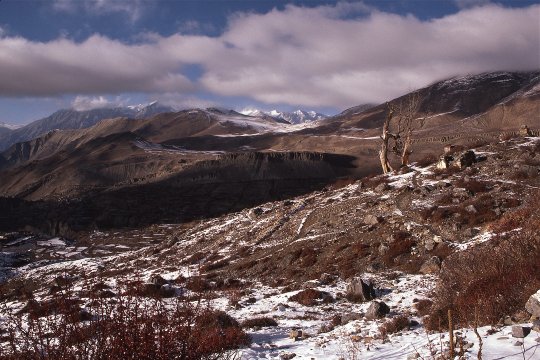 |
| 137. In the Manang and Mustang districts bordering Tibet very little land can be cultivated -- and not just because of the shortage of level land and suitable soils. |
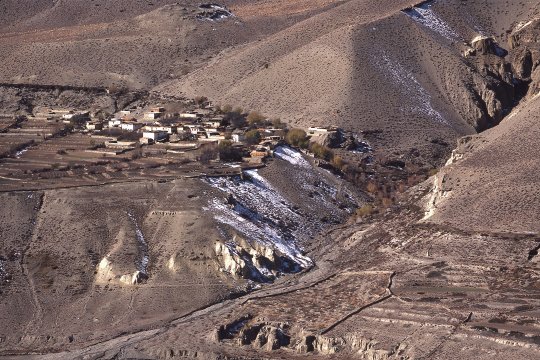 |
| 138. Both are positioned in the rain shadow of the Annapurna Massif so that farm settlements here resemble desert oases. |
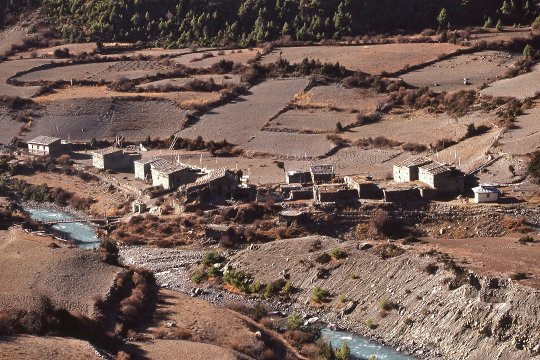 |
| 140. Agriculture is confined to low-lying areas, as these are both warmer and closer to a source of water. (Near Pisang) |
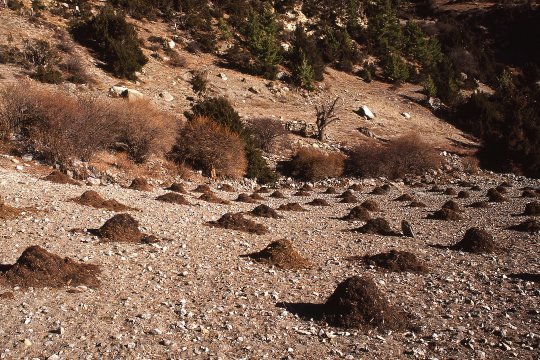 |
| 141. However, even here soils are thin and stony. And to improve fertility, manure from animal enclosures is stockpiled and spread by hand. |
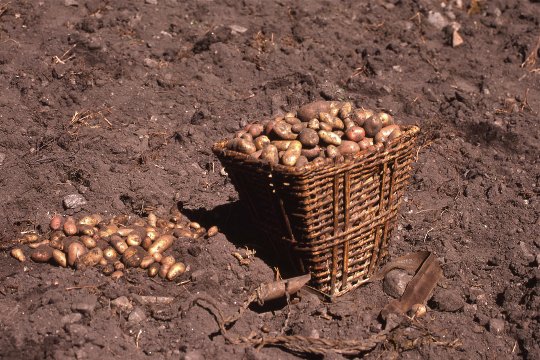 |
| 143. The potatoes were introduced during the 19th century and, coming from the Andes, can survive here at altitudes as high as 4000 metres. (Near Chame) |
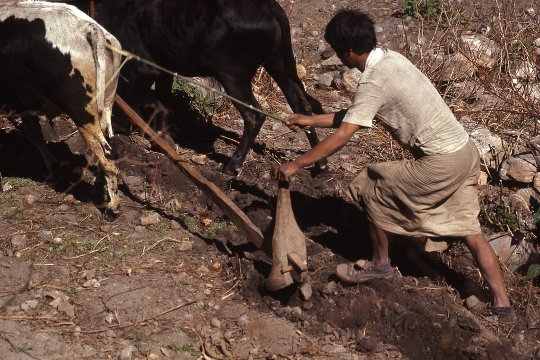 |
| 144. Though much of the work in these small fields is necessarily done by hand using hoes, wooden ploughs are made locally (some with steel points). This man is ploughing his potato patch. |
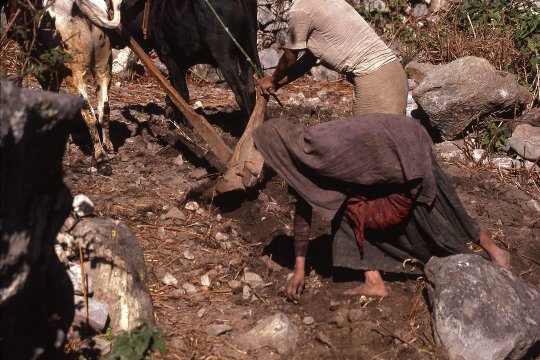 |
| 145. His wife, walking behind him, searches for the potatoes he uncovers, placing them first in the red bag formed by her sash: and, when that is full, in the basket she will use to carry them home. |
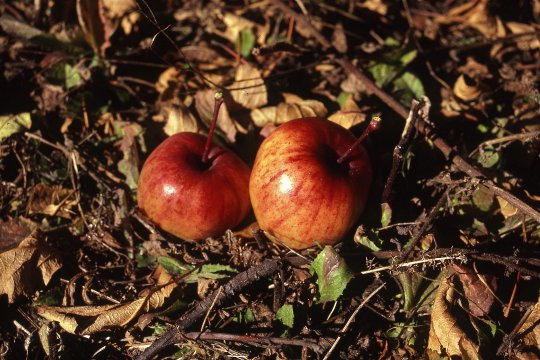 |
| 147. Lots of apples are grown here, too, but because the local market is so small, and it is difficult to transport fruit to other areas, very few apples are eaten fresh. |
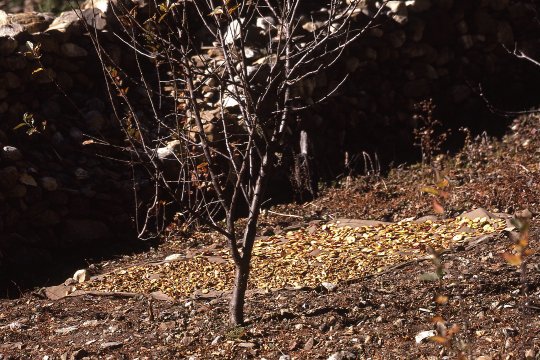 |
| 148. Some are sliced and, with the low humidities that prevail here, are dried in the sun -- for longer storage and easier transport. |
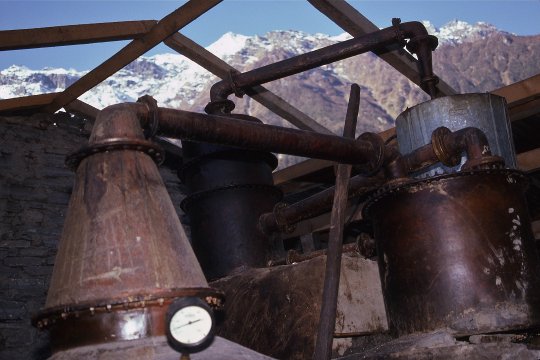 |
| 149. However, the greater bulk of the crop is turned into liquor much of it at the "K.C. Distillery" near Bagarchhap in the Marsyangdi valley. |
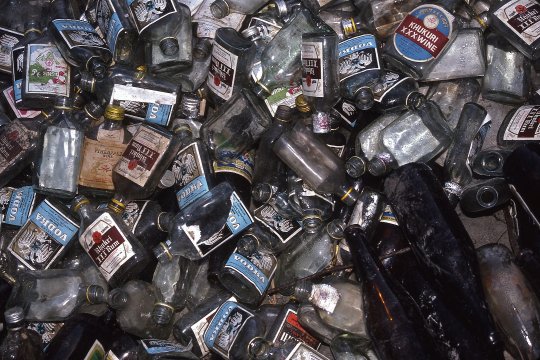 |
| 151. What is certain is that a lot of old rum, brandy, vodka and beer bottles are re-cycled in the process. |
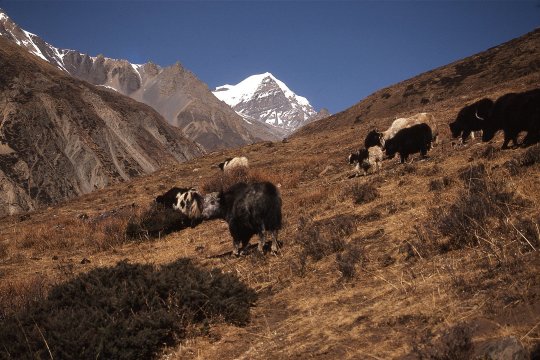 |
| 152. Livestock are forced to spend the winter in shelters on the floors of valleys, but in summer they are grazed on alpine pastures on slopes high above the villages. (Near Manang) |
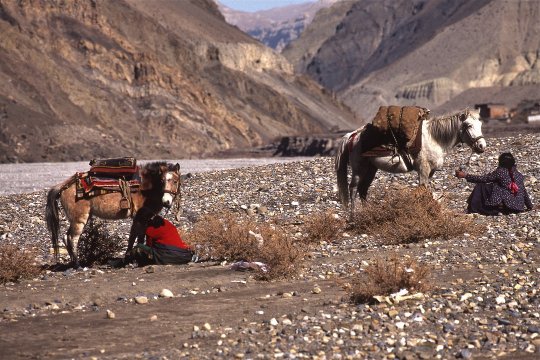 |
| 157. Donkeys, horses and mules provide means of transport and are also used as pack animals. These women from Mustang were heading for Jomsom. |
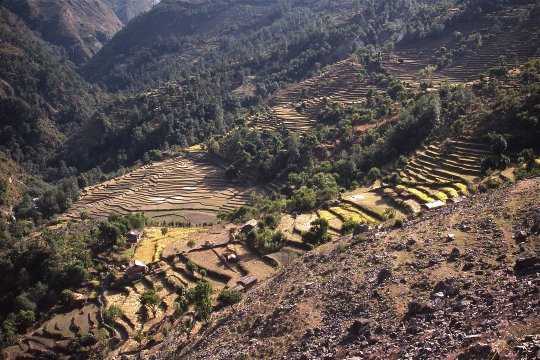 |
| 158. Further south in the valleys of the Kaligandaki and its tributaries the climate is both warmer and wetter: but there is little level land still. (South of Tatopani) |
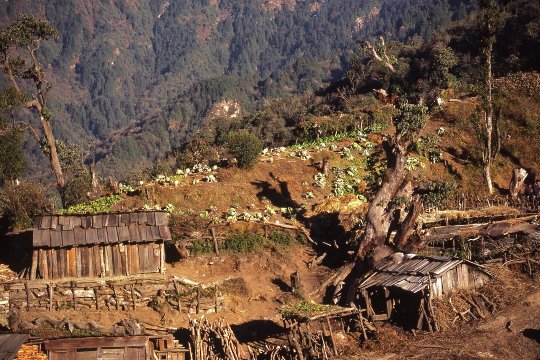 |
| 159. In places fields and gardens are minute, and perched on suicidally steep slopes. (Near Ghorepani) |
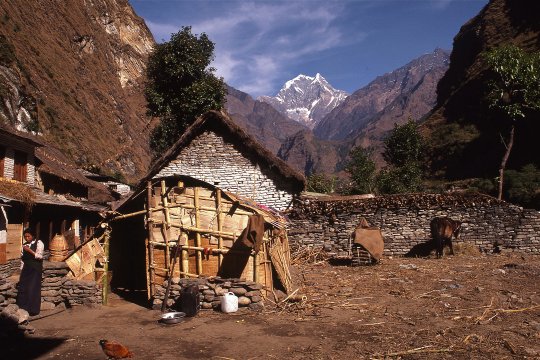 |
| 160. And it is obvious that those who live here must struggle to survive. (Near Tatopani) |
![]()
Text, photos and recordings
by John Tyman
Intended for Educational Use
Only.
Contact Dr. John Tyman at johntyman2@gmail.com
for more information regarding
licensing.
![]()
www.hillmanweb.com
Photo processing, Web page layout,
formatting and hosting by
William
Hillman ~ Brandon, Manitoba ~ Canada